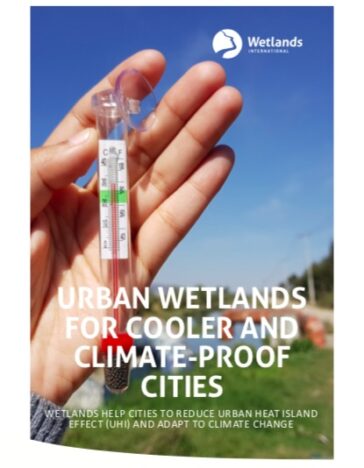
Urban Wetlands for Cooler and Climate-Proof Cities
-
Coastal resilience
-
Coastal wetland conservation
-
Integrated delta management
Cities are expected to account for nearly 7 billion people or two-thirds of the total global population by the year 2050. This growing urban population has a huge impact on cities, their surroundings and their micro-climates. This urbanisation process drives wetland loss, absorbing rural wetlands into the city and landfilling existing urban wetlands for industry or housing. For example, in India, for each km2 of newly urbanised surface, 25 hectares of wet- lands are lost.
This degradation of wetland can lead to loss of biodiversity habitat, reduces water supply, increased risk of flooding, waterlogging, and carbon emissions, it also limits the capacity to absorb heat and regulate local climates. The urbanisation of the landscape can result in alteration of local climates, particularly causing Urban Heat Island effect (UHI), in which cities experience higher temperatures than their surrounding areas.
With climate change leading to more severe and frequent heat waves, cities can manage these by protecting, restoring and (in some cases) constructing urban wetlands and integrate them with other blue-green infrastructure such as bioswales, rainwater gardens, blue roofs and UHI measures like increased tree and vegetation coverage, and green roofs. While tackling UHI in the dry season, these can also reduce urban flooding during monsoons or rainy seasons.
We call on researchers, knowledge institutes and international organisations to join us in developing an ‘urban wetlands for UHI’ programme, in which research and field demonstration can be linked to global policy and practice.
To find out more, download the brochure ‘Urban Wetlands for Cooler and Climate-Proof Cities’ below.

